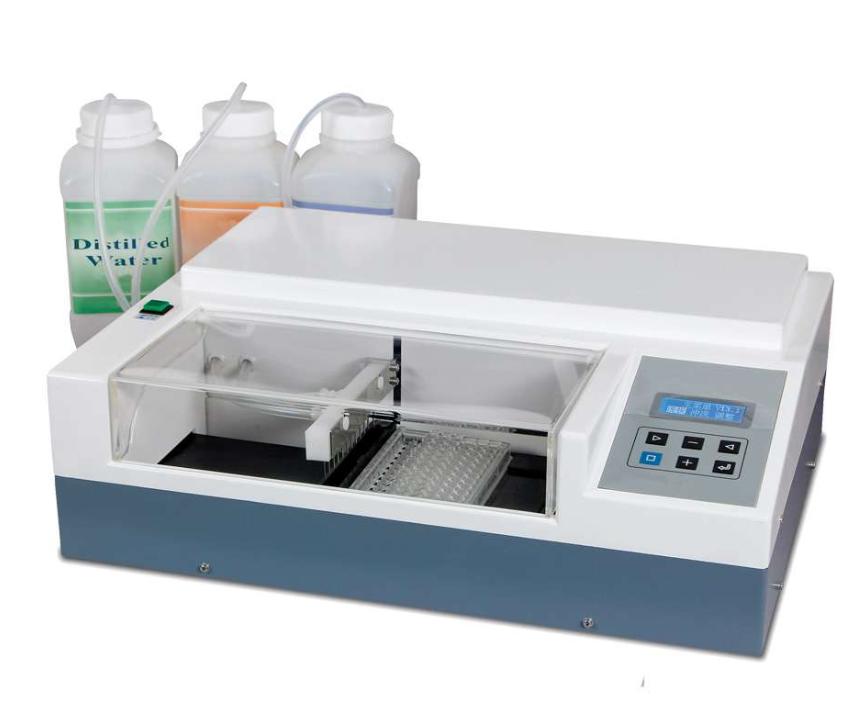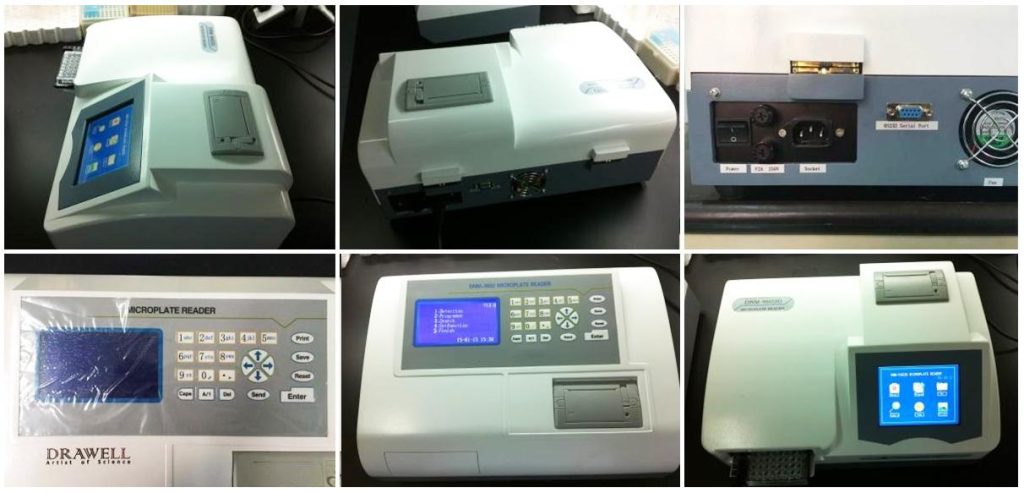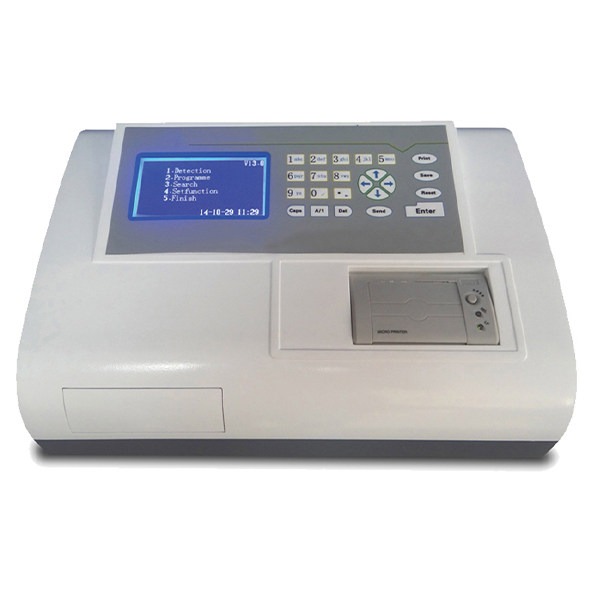The Enzyme-Linked Immunosorbent Assay (ELISA) is a vital technology in both research and diagnostics, known for its ability to detect and quantify various biological substances like proteins, antibodies, and antigens. Whether for disease testing, drug discovery, or immunology studies, ELISA has become a cornerstone of laboratory work.
To perform an ELISA accurately and efficiently, two key tools are indispensable: ELISA readers and washers. These devices automate crucial steps of the assay, ensuring precision and reliability in results. In this article, we’ll explore how ELISA readers and washers function, their role in research and diagnostics, and the significant advantages they offer.

What are ELISA Readers and Washers?
ELISA readers are optical devices that measure the intensity of light emitted or absorbed by a specific wavelength during the ELISA reaction. This measurement is directly proportional to the concentration of the target molecule. ELISA readers typically employ a photomultiplier tube (PMT) or a charge-coupled device (CCD) to detect the light signal.
ELISA washers are automated devices that perform the critical washing steps involved in ELISA. Washing is essential to remove unbound reagents and reduce background noise, ensuring accurate and reliable results. ELISA washers typically use a vacuum system to aspirate and dispense washing buffer.

How They Work Together in an ELISA Assay Workflow
The ELISA assay involves multiple steps, including binding antigens to a solid surface, adding detection antibodies, and using an enzyme-linked secondary antibody that reacts with a substrate to produce a measurable signal.
ELISA Readers detect and quantify the intensity of the signal produced in the assay, typically by measuring absorbance (colorimetric), fluorescence, or luminescence. By analyzing this signal, the ELISA reader determines the concentration of the target substance in the sample.
In an ELISA assay, excess reagents and unbound materials need to be washed away to prevent false readings. ELISA washers automate this cleaning step, using precisely measured washing solutions to eliminate non-specific binding, leaving only the target reaction for analysis.
By automating these steps, ELISA readers and washers work in tandem to streamline the assay process, ensuring consistency across multiple samples and increasing the accuracy of the final results.

ELISA Reader and Washer in Research
In research, ELISA plays a crucial role across numerous fields, from drug discovery to immunology studies. Its ability to detect and quantify minute quantities of biological molecules makes it indispensable in both exploratory and applied research.
Key Applications of ELISA in Research:
- Drug Discovery and Development: ELISA is widely used to screen drug candidates by detecting interactions between drugs and specific proteins or receptors. It can monitor therapeutic efficacy or study pharmacodynamics, all while benefiting from the accuracy and high-throughput capacity of ELISA readers and washers.
- Biomarker Detection: In research focused on identifying disease biomarkers, ELISA provides the sensitivity needed to detect low concentrations of proteins or antigens. ELISA readers offer quick and precise quantification, while washers remove non-specific substances, increasing the reliability of results.
- Immunology Studies: ELISA is foundational for studying immune responses. It allows for the detection of antibodies or cytokines in response to antigens, critical for understanding immune function in both healthy and diseased states. ELISA readers measure immune activity accurately, while washers ensure the elimination of interfering particles.
The use of ELISA readers and washers in research not only improves the speed and efficiency of assays but also ensures the accuracy needed for groundbreaking discoveries.

ELISA Reader and Washer in Diagnostics
ELISA has long been a trusted method in medical diagnostics due to its sensitivity and specificity. It is used for diagnosing a range of diseases by detecting antigens or antibodies related to specific conditions. ELISA readers and washers automate key processes, making the technology even more reliable for clinical testing.
Key Applications of ELISA in Diagnostics
- Infectious Disease Testing: ELISA is widely used to diagnose infections such as HIV, hepatitis, and COVID-19 by detecting viral antigens or patient antibodies. ELISA readers quantify the presence of the pathogen, while washers help to prevent false positives by removing unbound antibodies or antigens.
- Allergy Testing: Allergy tests often rely on ELISA to detect specific IgE antibodies related to allergens. ELISA readers ensure precise measurement of these antibodies, while washers contribute by eliminating any cross-reactivity, resulting in accurate allergen identification.
- Cancer Diagnosis: ELISA is used to detect tumor markers such as PSA (Prostate-Specific Antigen) or CA-125, offering early detection and monitoring of cancers. The high precision of ELISA readers ensures accurate measurement, while washers ensure no false signals interfere with diagnostic outcomes.
- Hormone and Protein Analysis: Hormonal imbalances or protein-level abnormalities, such as thyroid issues or insulin resistance, are often diagnosed via ELISA. The sensitivity of ELISA readers allows for accurate quantification of hormones in blood samples, while washers ensure that only the target analytes are present during the analysis.
In the world of diagnostics, ELISA readers and washers are indispensable tools, providing the accuracy and consistency required for reliable disease detection and monitoring.
Advantages of Using ELISA Readers and Washers
The combination of ELISA readers and washers brings numerous benefits to both research and diagnostics. Here are the key Advantages:
- Accuracy and Precision: By automating the reading and washing steps, these devices eliminate human error, ensuring that the results are both accurate and reproducible.
- Time and Labor Efficiency: Automation reduces the need for manual intervention, allowing researchers and technicians to focus on data interpretation rather than sample preparation and washing.
- High-Throughput Capability: Both ELISA readers and washers can handle multiple samples simultaneously, making them ideal for large-scale studies or routine diagnostic testing.
- Reduced Contamination Risk: ELISA washers minimize the chance of contamination by ensuring thorough cleaning of plates between assay steps, leading to more reliable data.
ELISA readers and washers play a critical role in both research and diagnostics, streamlining processes and improving the accuracy of results. From drug discovery to infectious disease testing, their applications are vast and impactful. By automating key steps of the ELISA process, these tools enhance productivity, precision, and reliability, making them essential for any laboratory utilizing ELISA technology.

